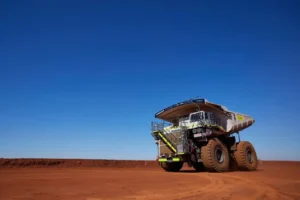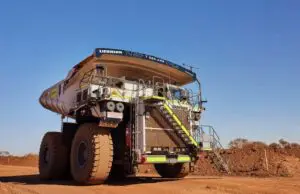For some time, there has been speculation about when global oil demand may peak – not because we will run out of oil or prices will spike making oil unaffordable, notions that are now considered passé – but because we won’t be needing as much of the stuff as we thought we would. And once the peak is finally reached – whenever that is – demand will begin to drop thereafter, perhaps precipitously.
What is radically different about the new thinking about oil demand is that price, while still an important factor, no longer seems as important as it used to be. As further described alternatives to oil are or will soon be cheaper making the price of oil far less significant.
Witness the fact that global oil has been growing at much slower clip in the last few years even though prices, hovering in the $40-60 range per barrel, have been at or near historical lows. The old theories that low oil prices result in robust demand growth may no longer apply – and that, of course, would be a radical departure from the historical norms.
In a report titled When will global oil demand peak? Rob West, an analyst at Redburn, an investment research and advisory service in the City of London points out that:
“Global oil demand grew +1.1Mbpd pa in the last decade. Peak demand is seen well beyond 2035 by BP, in 2040 by the IEA, in 2030 by McKinsey and in 2029 by OPEC. But at $55-60 oil, we argue demand can slow to <0.5Mbpd pa from 2020 and peak in 2026.”
West identifies 5 major trends, all contributing to intensified market competition and – one might add – potentially devastating consequences for the oil majors:
- Alternatives to oil, especially in the critical transportation sector, will make oil vulnerable to behavioral and technological disruptions (table above);
- Electric vehicles – increasingly charged from renewable sources – will begin to eat into internal combustion engine’s (ICE) dominant market share (Fig on page 8) – a trend that many expect will accelerate once EVs move mainstream and a charging infrastructure is in place;
- Oil subsidies, once prevalent in many countries – are expected to dwindle or be phased out entirely as already witnessed in a number of countries (Fig below);

- Cheap solar (Fig on page 7), wind and gas- fired generation will reduce oil demand in the global electric power sector; and
- Travel demand will dwindle (Fig on page 7) due to aging population and the rise of “virtual travel.”
Much of Redburn’s narrative, of course, is not new. But this condensed 11 page report manages to bring the facts together and distill a powerful conclusion – namely a prediction that peak oil demand may be a reality much sooner than many in the mainstream are predicting – less than a decade away.
For example, there is little disagreement that oil subsidies, once prevalent in many rich and even few non-rich OPEC countries, are being reduced and/or gradually phased out in Saudi Arabia, Indonesia, Mexico, Egypt, Iran – to name a few.
Or the use of oil in power generation. In much of the OECD, it is a thing of the past. The same is likely to happen globally.
With the price of renewables continually falling, they will increasingly be cost competitive with conventional fossil fuel sources. The table on page 6 illustrates the point. Why bother with alternatives when solar generation can be had for around 2-3 cents/kWh.
Among Redburn’s interesting insights is the dwindling road travel, which it attributes to a number of factors, including demographic & “growing digital connectivity.” It says:
“Miles travelled per person are falling 0.7% pa in the UK (2005-15) and -0.6% in the US (2004-14). One reason is aging populations, with 14% over 65 in the OECD in 2006, rising to 16.6% in 2016, accelerating to c20% in 2026. Another nascent trend is “virtual travel”, with greater Internet purchasing and the advent of ‘virtual reality’ (e.g., the Oculus Rift).”
In describing the phenomenon, Reburn report points out:
“Due to the launch of VR technologies, which are in their infancy today – e.g., the Occulus Rift, the Samsung Gear, HTC Vive – we would expect disruption to travel from digitization to accelerate in the next decade.”
When Facebook purchased Oculus in 2014, Mark Zuckerberg highlighted an ambition to disrupt travel:
“After games, we’re going to make Oculus a platform for many other experiences. Imagine enjoying a court side seat at a game, studying in a classroom of students and teachers all over the world or consulting with a doctor face-to-face – just by putting on goggles in your home.” In the US, regular home working has doubled since 2005. 2.5% of the labor force works from home at least half the time. Harvard Business Review describes 13.5% productivity gains from working remotely, plus cost savings of $11,000 per person and a 50% lower likelihood of quitting one’s job. Penn State researchers even found ‘remote workers’ more alert and attentive, attributed to getting 1-hour more sleep per week and not commuting. So if you are reading this note in the office, go home immediately… ,” West advises.
Regarding electric vehicles, Redburn is simply following what many others have been saying. Some experts are far more ambitious, others less so. And the bottom line is that nobody really knows.
“Finally, the variable intentionally left for last,because it is both the most important and the most uncertain, is the penetration of electric vehicles. As background, the average fuel economy of the average US passenger car has improved at c2.5% pa since 2006, coinciding with the period of high oil prices. Car makers are also focused on continuing to improve vehicle fleet efficiency, so this trend may continue. But the new element is the advent of the “electric car”, with some commentators calling for a total replacement of internal combustion engines with electric vehicles as early as 2030.”
In trying to quantify the impact of EVs on oil demand Redburn says:
“The global passenger fleet rose by 3.5% pa in the past decade, explaining 0.4Mbpd pa of overall demand growth for gasoline and 0.8Mbpd pa demand growth for road-transportation fuels. If future growth in transportation fuel demand is diluted by EVs’ share of net future vehicle sales (new purchases minus retirements), then:
EVs will be displacing c0.1Mbpd of annual demand growth in 2020, 0.3Mbpd in 2025 and 0.7Mbpd in 2030.
Cumulatively, that would destroy 0.3Mbpd of oil demand in 2020, 1.2Mbpd by 2025 and 3.8Mbpd by 2030.”
“Given the exponential adoption curves … it may not be surprising that the impact of electric vehicles on global oil demand increases every year.”
Having examined the 5 critical trends, Redburn comes back to Economics 101: the impact of price of oil on near term demand.
“Back in the real world, the most important variable for near-term oil demand is likely to be the oil price. For instance, when we measure the driving activity across 120 of the world’s toll-roads, spread across the planet, we find a perfect correlation between the rate of driving growth and the YoY oil price. As oil prices collapsed from c$110/bbl in mid-2014 to c$50/bbl in the trailing 12 months, the rate of driving growth accelerated from c3.8% to c5.1%. Given that road travel comprises around c40Mbpd of the world’s oil demand, a 1.3% acceleration in growth should, all-else equal, be adding c0.5Mbpd to the rate of global oil demand growth. Indeed, global oil demand growth did accelerate from 1.3Mbpd in 2012-14 to 1.8Mbpd in 2015-16 (2.1Mbpd in 2015 and 1.6Mbpd in 2016), reflecting elasticity.”
Redburn’s main message is that global oil demand will likely peak around 2026, and that would be without any major inflection in technology. If one assumes an inflection point for electric vehicles (EVs), autonomous EVs (AEVs), solar, energy, storage or other, then the peak may come even sooner.
What are we to make of this and others who are predicting peak oil demand? Rob West, a partner in oil & energy research at Redburn believes that given the evidence presented, the implications for oil majors is rather unambiguous. Peak oil demand is coming, it may happen sooner than many expect, and once it
arrives, demand for oil may begin to drop –possibly precipitously – something few oil majors have given much thought to in the past.
That may begin to change, even though the Trump Administration has proposed to nix the US automobile mileage efficiency standards put in place by the Obama Administration.
Perry Sioshansi is president of Menlo Energy Economics, a consultancy based in San Francisco, CA and editor/publisher of EEnergy Informer, a monthly newsletter with international circulation. He can be reached at [email protected]















